For 18 years a mother has been trying to find answers to why her son apparently turned his back on his new life in Germany and withdrew almost £1,000 in cash before being found dying at the bottom of a multi-storey car park in London.
It was 04:00 on the morning of 22 January 2001 that Pat Ewart's nightmare began.
A knock on the door of her neat bungalow on the outskirts of Inverness was answered by her husband Ron.
"You need to get up, Pat," she remembers him shouting. "There's a policeman at the door."
In a daze she stumbled downstairs to the incongruous sight of the police officer standing in her living room.
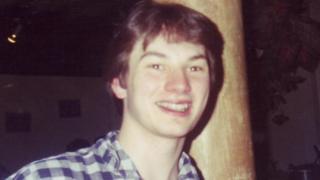 Image copyright
Alamy
Image copyright
Alamy
He cut to the chase. Their son Innes was dead.
The 27-year-old had been discovered the previous afternoon at the bottom of an eight-storey car park in East London.
The evidence had pointed to one thing: he had jumped from the rooftop and taken his own life.
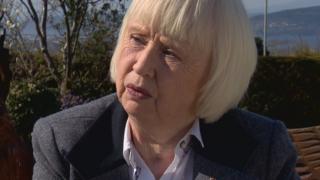
That point in time is forever frozen in Pat's memory.
Despite the passing of the years she rewinds every word and gesture of that early morning in flawless detail.
"No," she said. "You're wrong."
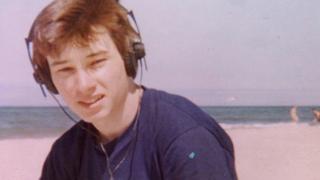
"Innes lives and works in Germany," she said.
"Look, I'll phone him now. He always answers his phone."
But this time the phone just rang and rang.
In a panic she ran to her computer to leave a message.
She remembers every word as if it was yesterday.
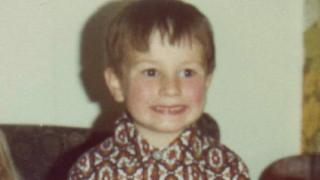
Pat wrote: "Innes. Pick up your phone. There's been a mistake. A body's been found and the police say it's you. Where are you?"
There was never to be a reply.
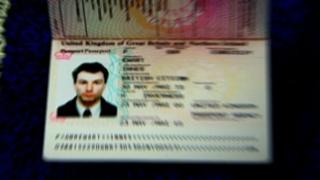
Police later told them Innes's passport and bank cards were on his body.
In the bewilderment and blur of the days that followed, Pat, Ron and their three other children tried to make sense of it all.
Nothing added up, Pat says.
Possible flaws
Innes, a computer programmer, had gone to Munich to work at Philips Analytica after employment had dried up in Scotland.
He loved his job, had no money worries and was close to his family and friends.
Only days before, the family had all chatted happily to him over the computer for more than two hours.
Nothing seemed wrong, nothing remiss.
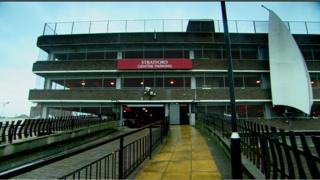
But the facts appeared to speak for themselves. Police had viewed CCTV footage of the open rooftop car park above the Stratford Shopping Centre from where Innes was said to have jumped.
The camera, on the eighth floor, shows Innes coming out of the lift alone and walking straight through the landing doors to the car park. That was all. There were no CCTV cameras on the rooftop itself.
In these few short frames he seems neither anxious nor hurried. The tape records the time as 14:54.
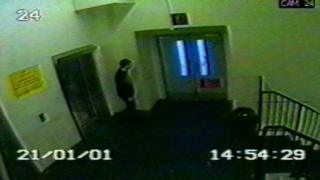
At 15:00 Innes was found dying by shop workers below.
The police later said there was no signs of struggle.
By 17:45 that day police had wrapped up the scene, concluding that Innes had killed himself.
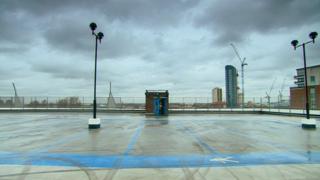
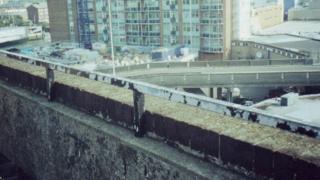
Three short impersonal hours was all it took to sum up a life and its terrible finale.
For Pat too, a soul-searching audit of a son's life awaited.
Ron had asked her to think the unthinkable - perhaps Innes did take his own life.
Pat sat through a whole night, poring over possible flaws, missed clues or traits that she may have overlooked in her son's character.
Designer watch
By dawn she was more convinced than ever that Innes could not have killed himself.
And new evidence in the days and months ahead raised doubts about how the police had conducted the investigation.
"I phoned up Forest Gate Police Station (in East London) to ask about a gold designer Raymond Weil watch we had bought Innes that Christmas," says Pat.
She was astounded to be told the police had not found one on him.
There was no way he would not have left Munich without it, she says.
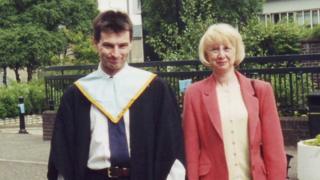
And there was more.
Pat and Ron discovered that Innes had withdrawn about £1,000 in cash from his German and Scottish bank accounts the day he left Germany.
One of the investigating officers on the day, stated that he had no knowledge of any missing money.
Pat faxed him this key new piece of information but the officer said he had not received it.
For Pat, the police's hasty deduction of suicide was now looking increasingly tenuous.
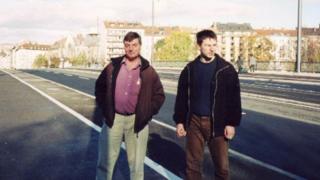
Innes's father Ron says it looked like his son had been robbed.
Someone might have seen his money and gone after it, Ron says.
But Innes would have stood up to him, he says. He wasn't frightened.
Cinema ticket
There were still other unanswered questions for the family.
What was he doing in London? Why did he only have £1.10 in his pocket?
The police had found tickets among his belongings.
A booking for a hotel in Innes's name the evening before but which he never stayed in.

Another was a Tube ticket bought at Stratford Station.
It was placed in the barrier and recorded as used but Innes never made that journey.
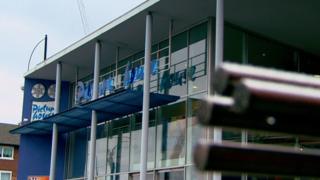
More intriguingly, Innes purchased a cinema ticket at the nearby Stratford Picture House.
The film was due to play at 14:45 that afternoon - 15 minutes before Innes was found dying.
Who buys a cinema ticket and then goes on to kill themselves, his family asks?
Despite this Pat and the family kept faith with the police.
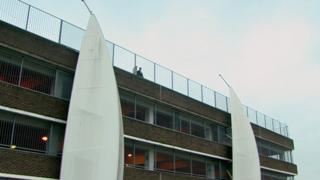
"I was brought up to trust the police. I thought they would investigate," Pat says.
That faith was to be severely tested seven months later at Walthamstow Coroner's Court when the coroner delivered an open verdict.
Dr Elisabeth Stearns said she "could not satisfy herself as to precisely what happened in the few minutes leading up to the fall".
She added that it did not mean that the police had not investigated it thoroughly but that there were still "unanswered questions".
Some of those unanswered questions did concern the hasty police investigation.
Threw jacket in bin
Innes had bought a ticket at Stratford Picture House at 14:27 that day. Another officer was despatched to seize collect any CCTV footage in and around the cinema.
That officer said he was told by staff there was recorded footage inside the foyer but staff had no access to it as the manager was not on duty. He asked that it be kept and it would be collected later. That tape was never picked up.
 Image copyright
BBC Sport
Image copyright
BBC Sport
A later statement given by the cinema's deputy manager seems to contradict the officer's account. He said that an officer asked him about the footage from the foyer that day. He did not ask to view it but said someone might contact him later about it.
Later the police heard evidence from the cinema's security guard. He recalls that afternoon seeing a man in his 30s just outside the cinema in a very agitated state. At one stage he threw a jacket in the bin before retrieving it.
Was it Innes? Pat will never know. But what could have been vital evidence was allowed to slip through the cracks of the investigation.
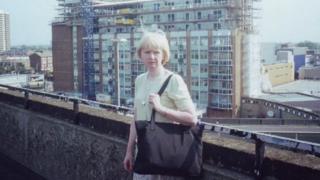
Failed memories were in abundance that day. One officer said he had told his colleague of the cinema footage but in a later inquiry that officer would say he had no memory of that conversation taking place.
One thing the police did do on the day of the coroner's inquest was to take Pat and Ron to the car park to see for themselves where Innes had died.
The car park is open to the elements and affords a panoramic view of the surrounding Lea Valley. But then, according to the Ewarts, the police officer who was with them that day said something strange.
They say the officer blurted out to them that this was the first time he had been up on the top floor.
Pat says: "We were shocked to hear that."
She and Ron began to wonder if any proper forensic inspection had even taken place on the top floor that day.
As they walked back over the route Innes had taken that day they were even more astounded to discover that the place was saturated with CCTV cameras.
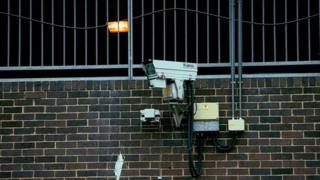
From the moment Innes had left Stratford Tube station to the short walk across the concrete plaza to the cinema, through the shopping mall leading to the lift to the car park, his every step would have been recorded on CCTV.
Yet the senior officer that day had only instructed her officers to seize footage from the cinema and the car park.
Determined to find out more Pat and Ron instructed their lawyers to file a complaint about the police investigation.
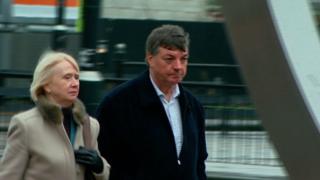
The family's persistence over the years to get answers has now led in total to three investigations - one an internal review, a Police Complaints Authority complaint and an independent review of police conduct.
On the outside, Pat is a politely spoken woman in her middle age who was brought up, in her own words, "to respect the police".
But 18 years of police obfuscation has forged a steely mettle.
Vital footage
To this day she refuses to believe the Metropolitan Police's reasons for her son's death.
She will fight to her dying breath to get answers to how and why Innes died that day.
She has fought tenaciously to see the internal police reports into the handling of Innes's case.
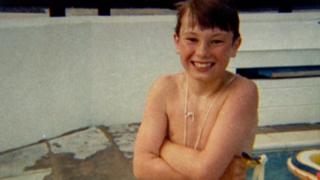
Now armed with the information through repeated Freedom of Information requests, the findings make for grim and depressing reading for Pat and her family.
Forensic analysis did take place but only on the lower second floor where a footprint was ruled out of the investigation.
Regarding forensics on the eighth floor, the Met's Internal Investigations Command stated "it had been impossible to establish if this was requested but clearly it was not done".
The report goes on to say that because of weather conditions on the day, nothing was lost by this omission.
But a central premise of a suicide is that there is no third party involvement giving rise to foul play.
Without doing this most basic of police procedures how can the police know whether there was or was not any foul play?
Most contentious of all was the seizure of vital CCTV footage.
No-one disputes there were ample opportunities to do so given the extensive coverage in the whole area.
There were cameras at the subway, cinema foyer and throughout the shopping mall.
So why did the officer in charge choose to limit these options?
The reasons set out in the various reports over the years appear contradictory.
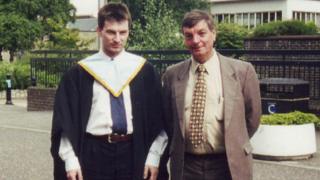
An internal Met review of the investigation dated February 2002 said "CCTV footage within the Mall was checked but was negative". By the time another internal investigation had reported in May 2003 this had changed.
The officer in charge said that, since the circumstances seemed non-suspicious, there was no necessity to check the CCTV from the numerous cameras in the shopping centre.
For these omissions, two officers received "formal advice from a commanding officer for their failings". In other words, a verbal dressing down.
A potential crime scene is a fast moving and confusing mix of witnesses, police and forensic personnel, evidence gathering and on-the-spot statements.
To help police in the critical hours and days ahead, it is accepted that it is good practice to log as much of the event as possible.

The police toolkit for such situations usually includes a Crime Scene Log to monitor times of arrival and departure for police and forensic personnel.
An Incident Management Log is also key in protecting the chain of evidence, logging the decisions and strategy of the officer in charge on the day.
And all officers are encouraged to take statements and observations in their small pocket books.
'Don't hate police'
Much of what happened on the afternoon of 21 January 2001 may never be clear. But what could have been revealed to Pat and her family might have been contained in these contemporaneous records.
However, the pocket books of two officers and the Incident Management Log from the day were lost prior to the inquest.
The reason given at the time was the chaotic state of the archive at Forest Gate Police Station.
What emerges in the various internal reports was that many of the officers on the day admitted that they had little if no training on securing and investigating a crime scene.
One was portrayed as a good officer but who "lacked the necessary experience to effectively deal with the case".
And while the officer in charge claims she did her best, she quoted her lack of investigative experience and training as an explanation for any shortfall.
For Pat Ewart, it is 18 years on but the pain and loss are still there.
She takes comfort from Innes's siblings and her growing family of grandchildren.
But still, she says, there is a hole in the heart of her family, one she can never be sure will be fixed.
As she looks out of her kitchen window on the Highlands countryside, she says simply: "I don't hate the police."
But behind her calm gaze a mother waits - waiting for the day when she has answers to how her son died.

Listen to the new podcast from BBC Scotland's Disclosure investigating The Strange Death of Innes Ewart. If you want to speak to BBC Scotland Disclosure about this investigation, or another story, follow the team on Twitter @BBCDislosure.
Other BBC Scotland podcasts include The Doorstep Murder, also available on BBC Sounds.